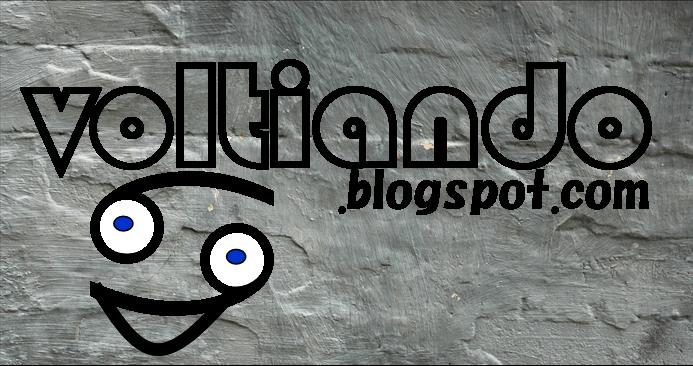Hoy curioseando por la red me consigo la noticia de la puesta en órbita del GeoEye-1, el satélite de fotografías de Google que tiene capacidad de minuciosas fotografias que, afortunadamente no estarán completamente disponibles para Google Earth/Maps, sino para el ministerio de la defensa de USA.

Imaginen su capacidad: según la página de Gizmodo: "Built by General Dynamics, the GeoEye-1 is equipped with a next-generation camera made by ITT. This camera can easily distinguish objects 16 inches long, with 11-bits per pixel color. In other words: this thing can see the color of your shorts. It will be up there, looking at your pants every single day, the time it takes for it to complete one orbit. And it will keep doing that for more than ten years, its expected life."
Y la pregunta obvia? Si tiene tal capacidad, por qué no ponerla a disposición de todo el mundo? Basicamente por seguridad. Como es obvio, desde la salida pública de Google Earth y Google Maps, muchos gobiernos pusieron el grito en el cielo por detallar su geografía y por el riesgo que esto representa para ataques militares o terroristas. Y es por ello que algunas zonas de Estados Unidos aparecen veladas y no son mostradas con la full resolución que el programa permite. Entre las areas restringas, obviamente el Capitolio, la Casa Blanca y hasta el Area 51 (¿se imaginan que se filtraran por ahí las fotos de los extraterrestes o las naves que andan por ahí cautivas?).
La censura se ha levantado un poco, como se aprecia en la foto anexa que compara la vista de la Casa Blanca en 2005 y 2008.
 ¿Desde que punto es positiva tanta resolución en fotografías aéreas? Ya sabemos que no solo los satélites nos están espiando desde unos cuantos kilómetros de altura, también hay aviones que se dedican a retratar centímetro a centímetro de tierra en lo que es llamado "birds´view".
¿Desde que punto es positiva tanta resolución en fotografías aéreas? Ya sabemos que no solo los satélites nos están espiando desde unos cuantos kilómetros de altura, también hay aviones que se dedican a retratar centímetro a centímetro de tierra en lo que es llamado "birds´view".Reproduzco a continuación un artículo muy interesante del Star Tribune (diario de Minneapolis) en su edición de ayer 6 de Septiembre que describe los beneficios:
New aerial photo system develops into government tool
Improved technology giving bird's-eye photos of every inch of property is saving money for cities and counties in a variety of ways.
By JOY POWELL, Star Tribune
Eagan police could hear the man destroying the interior of his ex-wife's house, where he had holed up in a standoff. The officers planning a tactical response went online to zoom in for a 360-degree view of the house and neighborhood.
Using aerial photos with overhead and side-angle views, the officers rotated the pictures as if they were circling the house from the air. Using special software, they measured, for example, how far they'd have to rush through open areas that left them vulnerable to gunfire as they approached the house.
Improved technology giving bird's-eye photos of every inch of property is saving money for cities and counties in a variety of ways.
By JOY POWELL, Star Tribune
Eagan police could hear the man destroying the interior of his ex-wife's house, where he had holed up in a standoff. The officers planning a tactical response went online to zoom in for a 360-degree view of the house and neighborhood.
Using aerial photos with overhead and side-angle views, the officers rotated the pictures as if they were circling the house from the air. Using special software, they measured, for example, how far they'd have to rush through open areas that left them vulnerable to gunfire as they approached the house.
And later, at Burnsville City Hall, council members peered at aerial images of a parcel where a former publishing house was to become a church. That took out the guesswork of what was on the property, thanks to the three-dimensional "birds-eye" view by Pictometry International.
The technology is being used by a growing number of counties and cities looking to save time and money. Assessors, for example, can view properties without ever leaving their desks.
"Before the technology came into play, appraisers would have gone out and knocked on these doors. Now we can inspect those properties from the desktop," said Bill Peterson, Dakota County's tax assessor.
Pictometry, which is based in Rochester, N.Y., uses low-flying planes to take aerial photos with 40-degree side angles.
With multiple perspectives, the oblique shots give much more detail than satellite photography. At least one other U.S. company, MultiVision USA, also offers the technology.
Emergency responders, local planners and inspectors use the photos and software to measure not only height, width and distances but also elevation and bearings. Fire officials, for instance, can spot a building's exits, or measure distance to a pond to determine how much hose they'll need for a brush fire.
Entonces, ¿que se siente estar espiado por satélites y aviones? En futuras ediciones hablaremos de algunos beneficios. Por ahora, cuidemos muy bien de estar combinados para salir bien en la foto.
Mosca viendo pa´arriba!!!


0 Responses to "La revolucion del GPS (2)"
Publicar un comentario